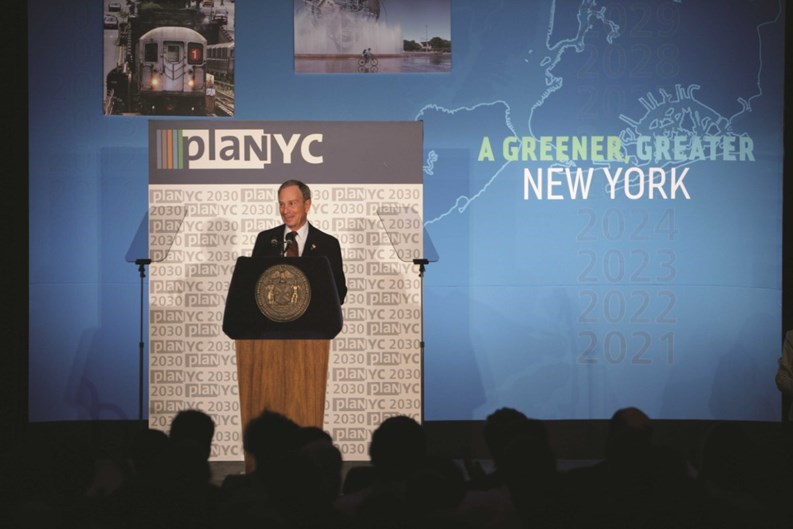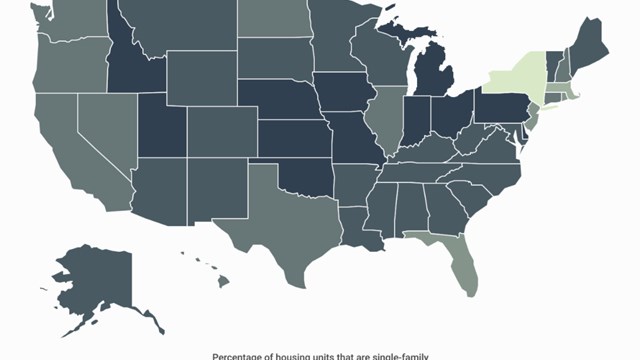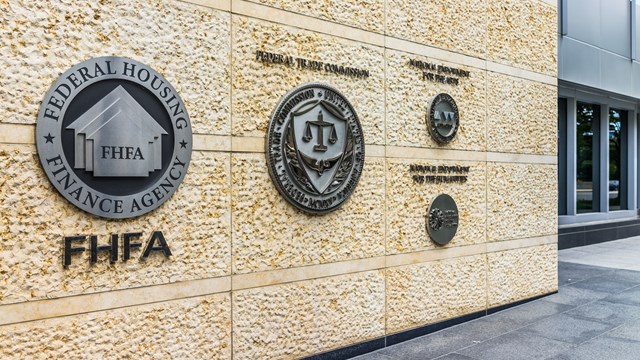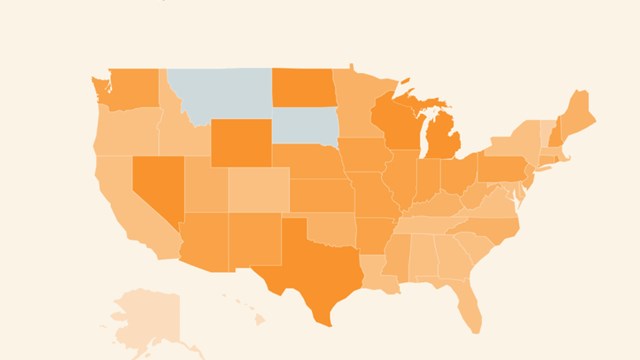For the past year or so, PlaNYC 2030, Mayor Michael R. Bloomberg’s sustainability initiative (“sustainability” being a new buzz word for “environmentally friendly” or “contributing to a better quality of life”) has taken center stage at City Hall.
Introduced on Earth Day 2007, PlaNYC 2030 is a catch-all collection of 127 measures designed to make New York a more livable city by the year 2030, when it is projected that there will be a million more New Yorkers—and Mayor Bloomberg will be 88 years old. It envisions a city with a Second Avenue subway, thousands of more affordable apartments, and a minimum of air and water pollution. Some people say it’s Bloomberg’s bid for a legacy that will outlast him—just as the now-infamous Robert Moses left a network of playgrounds, parkways and state parks and beaches.
The Plan
“Each of the 127 initiatives,” said Bloomberg at the unveiling of the plan, “will produce concrete improvements that New Yorkers will be able to see and feel and experience in their everyday lives.”
What exactly do those 127 initiatives include? At a breakfast at Gracie Mansion several months later, the mayor rapidly went through a laundry list of items, including hybrid taxis, more parks, high-occupancy vehicle lanes, cleaning up long-abandoned, polluted industrial sites that could be used for housing, planting street trees, establishing new express bus lines in each of the five boroughs, developing vacant lots, fixing pothole-plagued roads, and continuing work on a third water tunnel.
In some cases, PlaNYC will fund—or has already funded—projects that have languished for years, such as the rebuilding of the crumbling McCarren Park Pool in Greenpoint, Brooklyn, to which $50 million has now been allocated.
Lest one think that all is roses and pink ribbons, however, most of the reporters present at the Gracie Mansion event wanted to know more about Mayor Bloomberg’s congestion pricing plan, which would, he said, directly fund mass transit improvements.
This well-publicized plan would basically charge people an $8 fee for driving into Manhattan below 60th Street during business hours. “Even those people who are opposed to it aren’t kicking and screaming,” he told the audience. But that was before outer-borough politicians like State Senator Carl Kruger and Congressman Anthony Weiner, who represent many constituents who don’t live near the subway lines, began speaking out vociferously.
However, other elements of the mayor’s plan have proven very popular. At another mayoral press conference, this one at Pratt Institute in June 2007—the presidents of Pratt and another half-dozen major universities announced that they had accepted the mayor’s challenge to reduce their greenhouse-gas emissions by 30 percent within the next 10 years. They would do this by such tried-and-true methods as retrofitting buildings with “green” roofs covered in live vegetation, installing cogeneration systems to produce power in-house, using motion sensors for lighting, and tinted windows to cut down the necessity for heating.
“To me,” said Mary Ann Rothman, executive director of the Council of New York Cooperatives and Condominiums (CNYC), “PlaNYC is a strong set of guidelines, intended to give direction to our city for decades to come. Mayor Bloomberg and his staff have painted with broad brush strokes a plan for a livable city, with sufficient housing, schools, transportation, green spaces and amenities for those who will live, work and visit here.”
Affordable Housing Initiatives
What about the areas of the plan that relate to housing? The PlaNYC website dealing with housing initiatives (www.nyc.gov/html/planyc2030/html/plan/land_housing.shtml) lists 11 items related to the city’s residential real estate landscape.
The first 10 include directing growth toward areas with strong transit access; reclaiming underused waterfronts (such as the recent successful efforts to rezone the Williamsburg waterfront); using transit extensions to spark growth (such as with the No. 7 train extension); pursuing partnerships with city and state agencies; adapting outdated buildings to new uses; developing “underused areas” to link other adjoining neighborhoods together; decking over rail lines, highways and rail yards (plans for the Hudson Yards are a good example); developing new financing strategies and encouraging home ownership.
The last item is “preserving the existing stock of affordable housing.” The mayor, however, also has another plan, the New Housing Marketplace Plan, that predates PlaNYC 2030 by four years, and which commits the city to create 165,000 units of affordable housing by 2013. According to a statement made by the city Department of Housing Preservation and Development (HPD), about 83,000 units of all types had been funded by this past July. Although this is not part of PlaNYC 2030 as such, it doesn’t contradict its goals.
PlaNYC 2030 also encourages the growth of affordable multifamily housing. “The mayor’s affordable housing initiatives have long recognized that the cooperative model is an excellent vehicle for successful affordable housing,” says Rothman. “Cooperatives are empowering: the shareholders have a voice in the way their building is run; they must take responsibility for keeping it in good condition.”
Not all, however, are so quick to help the mayor take all the credit for these initiatives. “The mayor’s plan for creating new housing was made possible by the rezoning of many parts of the city by us, the City Council,” says Councilwoman Letitia James, D-Fort Greene/Crown Heights. She still is somewhat skeptical that developers’ definition of affordable may not mesh with what people in her district can truly afford.
How do housing organizations such as CNYC fit into PlaNYC 2030? Clearly, they’ve been lobbying for similar changes for years. “Organizations such as CNYC have always worked for the best quality of life for our members; we have been pleased to be included in several of the committees and working groups under PlaNYC,” said Rothman.
Mona Shyman, vice president of the Federation of New York Housing Cooperatives & Condominiums (FNYHC) and a co-op and condo management consultant, would not comment directly on PlaNYC 2030. However, her group has long been active in working for many of the types of changes that are included in the mayor’s plan.
For example, her organization held a seminar in late October 2007 about green building techniques, including use of soybean-based fuel—something that dovetails nicely with PlaNYC 2030’s advocacy of reducing carbon emissions, energy conservation and use of renewable energy. The group is also planning another seminar on how its members can heat a building with less energy, consistent with City Hall’s desire to reduce energy consumption. The mayor reported that a large chunk of pollution and wasteful energy use comes not only from cars but from buildings.
As far as affordable housing is concerned, Shyman says, “We have always advocated, as much as possible. We only ask that it should be fair [to applicants].”
State Approval Needed
Some of PlaNYC 2030 has gone through the City Council, such as the green building law and the environmentally preferable purchasing law. But in many cases, the real battleground will be in Albany.
For example, Mayor Bloomberg needs the state Legislature’s approval to create bodies, such as his proposed Energy Planning Board and Energy Efficiency Authority that duplicate some state-run functions. In addition, the city needs the state’s approval to create a new transportation funding group, the SMART Finance Authority, which would help fund such projects as the Second Avenue Subway and a new rail tunnel under the Hudson River. Also, Mayor Bloomberg wants to gain more authority to clean up brownfields, some of which could be redeveloped for affordable housing.
According to legislation-watchers, the big fight in Albany will likely be over the congestion pricing proposal. A 17-member Traffic Congestion Mitigation Commission forwarded its recommendations, such as changing the northern boundary of the zone to 60th Street from the original 86th Street, to the Legislature, which now must decide whether to accept them and figure out how to fund them. Both the City Council and the Legislature have to pass a version of congestion pricing in the next few months qualify for $354 million in federal funds, but it is Albany where more roadblocks are expected.
All sorts of objections to congestion pricing have come up, including some from residents of areas like Downtown Brooklyn who fear that commuters from farther-off Brooklyn will drive their cars there, take up all the local parking spaces, then take the subway to Manhattan.
A Greener New York
As we’ve mentioned, energy conservation and green buildings are an important part of the PlaNYC 2030 initiative. Among the components are reducing energy consumption by city agencies, strengthening energy codes, launching an energy awareness campaign, constructing new power plants, increasing the use of renewable energy (such as use of solar panels similar to those that are part of the rooftop structure of the new Coney Island subway terminal) and modernizing the electricity grid.
Toward the end of 2007, Mayor Bloomberg also announced a new rule setting the country’s first standard for the safe use and installation of microturbine systems in both residential and commercial buildings. According to a press release from the mayor’s office, “Microturbines are highly efficient turbine generators that recover and reuse the wasted heat of their own combustion process, after producing electricity and heat for a building, to provide energy for other building operations.”
By reusing that heat, microturbines make use of energy that would otherwise be expelled into the atmosphere—and that in turn reduces carbon emissions and gets more bang for the fossil-fuel buck as it were, providing cost savings to building owners. Until now, microturbine technology has been used purely in the realm of manufacturing buildings; no city in the nation has regulated the safe use and installation of the technology in a residential and commercial setting.
“The use of microturbines to generate electricity on site at commercial and residential buildings benefits us all,” said Steven Spinola, president of the Real Estate Board of New York (REBNY). “Because of the efficiency of these systems, New Yorkers will breathe cleaner air and building owners will save on operating costs. We can also add needed electric generation capacity without further taxing the transmission and distribution systems.”
In line with the mayor’s initiative under PlaNYC 2030, one Brooklyn-based company, RSP Systems, recently completed installation of a microturbine system at The Millennium Tower Residences at 30 West Street in Battery Park City. This system will provide the complex with 60 kW of power and first-stage domestic hot water heating, according to a company statement. The Millennium Tower Residences are the first LEED Gold-certified condominium in Battery Park City.
All in all, the city has set the ambitious goal of reducing its global warming emissions by 30 percent by the year 2030—whether by reducing emissions from buildings and motor vehicles, launching an ambitious campaign of energy-conservation education measures, or embracing new technologies. The mayor held another press conference in 2006 to dedicate the first LEED-certified department headquarters in the five boroughs—the new Office of Emergency Management building in Downtown Brooklyn. The project came about as a result of a gut renovation of a former Red Cross building.
Addressing Transportation
Closely related to housing is the issue of transportation, since no one wants to live in an inaccessible area. Here, PlaNYC 2030 has an ambitious program of helping to fund some projects that are already underway, such as the Second Avenue subway line.
Also falling under the “transportation” umbrella is the issue of parking. Part of the mayor’s plan is what’s being referred to as a Residential Parking Permit (RPP) program. According to a press release issued by the mayor’s office in conjunction with the Department of Transportation (DOT), “The program is designed to give local residents priority for on-street parking in residential areas and to discourage park-and-ride activity by commuters. It will be tailored by neighborhood to address specific needs, and restrictions will vary based on neighborhood parking patterns.”
The announcement of the program followed a dozen community parking workshops held by DOT in several NYC neighborhoods between November 2007 and February 2008. All neighborhoods would have the opportunity to consider opting into the RPP program.
“This is a strategy that together with congestion pricing, will help us achieve one of the key goals of PlaNYC—cutting down on pollution-creating traffic and creating an environmentally sustainable transportation system for New York City,” said Mayor Bloomberg. “A number of other cities, including Washington D.C., Boston, Chicago, and San Francisco, have long had successful residential parking permit programs. We are confident that it will succeed here too.”
Other PlaNYC 2030 proposals are still on the drawing board, such as new express bus routes in every borough that use dedicated lanes; more high-occupancy vehicle lanes in general; integration of the city’s private Hudson and East River ferry services into the city’s transit system; increasing the number of bike paths such as the Brooklyn Greenway; and putting an extra track on the LIRR’s main line to increase capacity.
Funding and Longevity
In his original speech announcing the program, Bloomberg referred to several funding mechanisms for all these measures, including some of the aforementioned state-sanctioned authorities and planning boards (such as the SMART Finance Authority), a change in the City Charter to require more funding from the state to retrofit city buildings, projected savings from energy conservation measures, and, of course, money obtained from the congestion pricing plan.
What guarantee is there that all of this will outlive Mayor Bloomberg’s administration? “There’s no guarantee that it will pass the State Assembly,” says Councilwoman James. While she supports many of PlaNYC’s proposals, such as those dealing with alternative energy, she points out that other proposed measures are already being carried out by non-city entities such as the MTA.
Rothman has her own predictions. “Will PlaNYC survive beyond the Bloomberg administration? I think it will. It points us toward goals that any incoming administration is likely to support as well. It encourages partnerships between government, private industry and organizations such as CNYC. And although it sets many specific goals, I believe it still has flexibility for re-evaluation.
Raanan Geberer is a freelance writer and editor living in New York City.










Leave a Comment